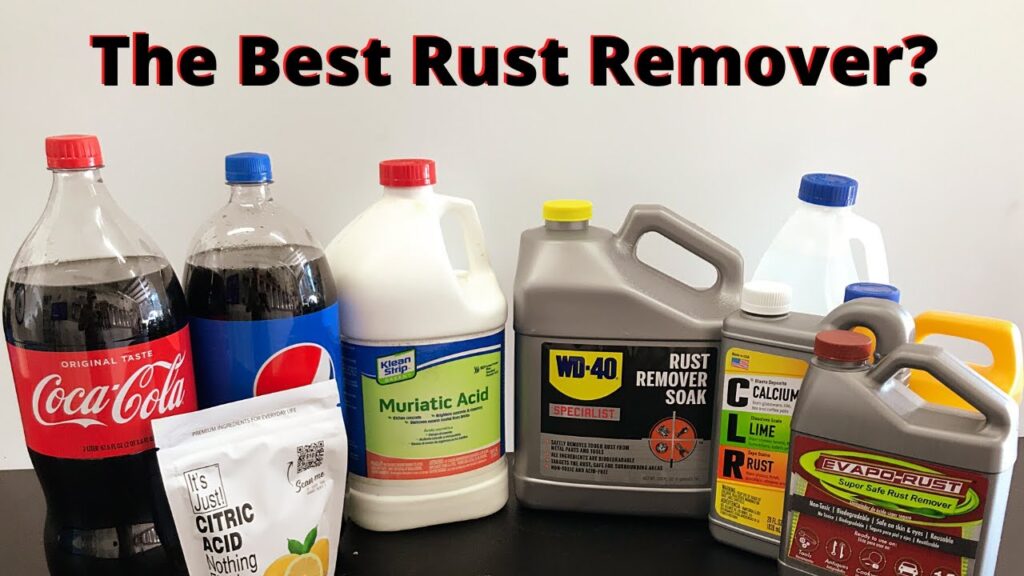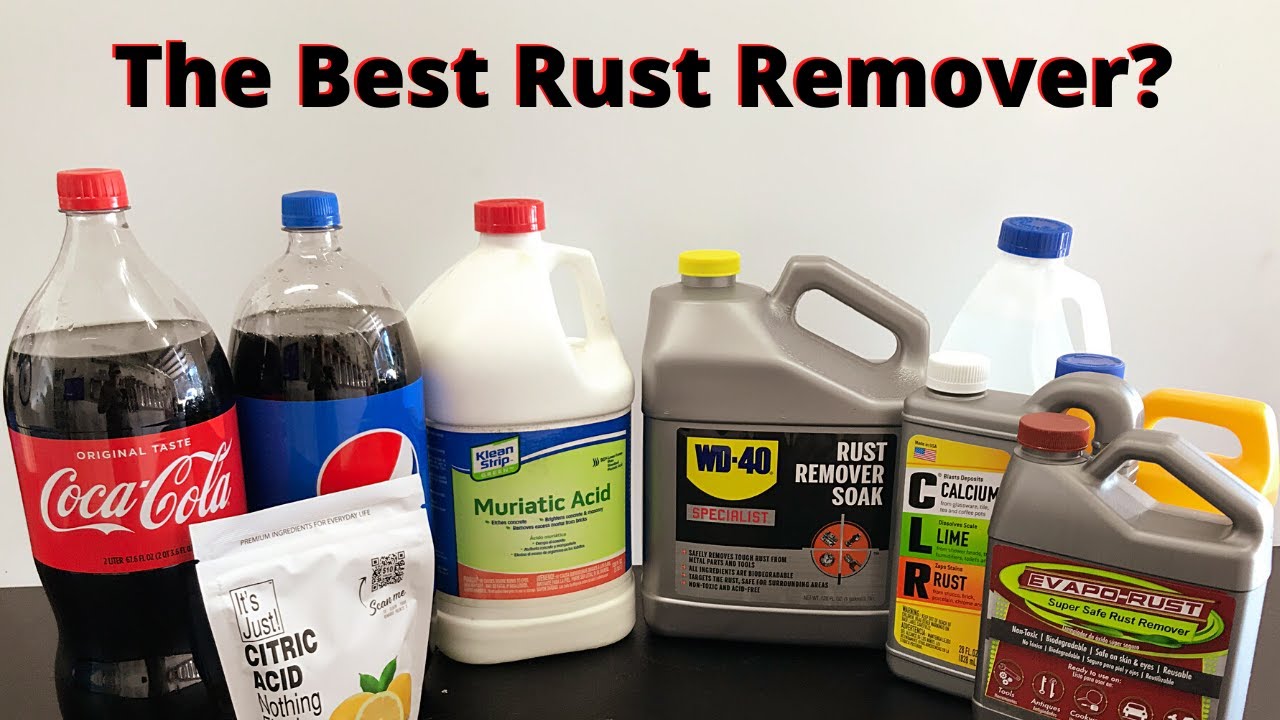
Acetone as a Rust Remover: An In-Depth Guide
Rust, that reddish-brown scourge, is the bane of metal surfaces everywhere. From tools and automotive parts to household appliances and outdoor furniture, rust weakens and corrodes, ultimately leading to costly repairs and replacements. Many solutions promise effective rust removal, but one chemical often overlooked is acetone. Can acetone truly act as a reliable rust remover? This article dives deep into the efficacy of acetone for rust removal, exploring its properties, application methods, safety precautions, and limitations.
Understanding Rust and Acetone
What is Rust?
Rust is the common name for iron oxide, a chemical compound formed when iron or an iron alloy, such as steel, is exposed to oxygen and moisture. This electrochemical process, known as oxidation, results in the formation of a flaky, reddish-brown layer that weakens the underlying metal. The presence of electrolytes, such as salt, accelerates the rusting process.
What is Acetone?
Acetone, also known as propanone, is a colorless, volatile, flammable organic solvent. It is widely used in various industries and household applications, including nail polish remover, paint thinner, and cleaning agent. Acetone‘s chemical formula is (CH3)2CO, and it is characterized by its ability to dissolve a wide range of organic compounds. It is important to understand that acetone itself is not a rust remover in the traditional sense, like a chemical that directly converts or dissolves rust. However, its solvent properties can play a role in the rust removal process.
The Role of Acetone in Rust Removal
While acetone doesn’t chemically react with rust to dissolve it, it can be a valuable tool in the process of rust removal. Here’s how:
- Degreasing and Cleaning: Before any rust removal method is applied, it’s crucial to clean the surface thoroughly. Acetone is an excellent degreaser, effectively removing oil, grease, dirt, and other contaminants that can hinder the penetration of rust remover products or mechanical abrasion.
- Loosening Rust Particles: Acetone can penetrate the porous structure of rust, helping to loosen the bond between the rust and the underlying metal. This makes it easier to remove the rust through mechanical methods such as scrubbing or wire brushing.
- Carrier for Other Rust Removers: Acetone can be used as a carrier solvent for certain rust remover chemicals. By dissolving the active rust remover ingredient in acetone, it can help improve penetration and effectiveness, especially in hard-to-reach areas.
- Drying Agent: After using water-based rust removers, acetone can be applied to quickly dry the surface and prevent flash rusting (the rapid formation of new rust on a freshly cleaned surface).
How to Use Acetone for Rust Removal: A Step-by-Step Guide
Using acetone for rust removal requires careful preparation and adherence to safety guidelines. Here’s a step-by-step guide:
Step Preparation
- Gather your materials: You’ll need acetone, safety gloves, safety glasses, a well-ventilated area, a clean cloth or rag, a wire brush or abrasive pad, and a container for disposal of used materials.
- Prepare the surface: Remove any loose debris or flaking rust with a wire brush or scraper. This will help the acetone penetrate more effectively.
- Protect yourself: Wear safety gloves and glasses to prevent skin and eye contact with acetone. Work in a well-ventilated area to avoid inhaling the fumes.
Step Application
- Apply Acetone: Soak a clean cloth or rag with acetone and apply it liberally to the rusted area. Allow the acetone to sit for a few minutes to penetrate the rust.
- Scrub the Surface: Use a wire brush or abrasive pad to scrub the rusted area. The acetone will help loosen the rust particles, making them easier to remove.
- Repeat if Necessary: For stubborn rust, repeat steps 1 and 2 until the rust is removed.
- Clean the Surface: Once the rust is removed, wipe the surface clean with a fresh cloth dampened with acetone. This will remove any remaining residue.
- Dry the Surface: Allow the surface to air dry completely. You can also use a clean cloth to dry the surface.
Step Post-Treatment
- Apply a Protective Coating: To prevent future rust formation, apply a protective coating such as paint, primer, or a rust inhibitor. This will create a barrier between the metal and the environment, protecting it from moisture and oxygen.
- Proper Disposal: Dispose of used acetone-soaked rags and materials properly according to local regulations. Do not pour acetone down the drain.
Safety Precautions When Using Acetone
Acetone is a flammable and potentially hazardous chemical. It is crucial to take the following safety precautions when using acetone for rust removal:
- Ventilation: Work in a well-ventilated area to avoid inhaling acetone fumes. If adequate ventilation is not available, wear a respirator.
- Flammability: Keep acetone away from open flames, sparks, and heat sources. Acetone is highly flammable and can ignite easily.
- Skin and Eye Contact: Avoid skin and eye contact with acetone. Wear safety gloves and glasses to protect yourself. If acetone comes into contact with your skin, wash it immediately with soap and water. If it gets into your eyes, rinse them thoroughly with water and seek medical attention.
- Ingestion: Do not ingest acetone. If acetone is swallowed, seek medical attention immediately.
- Storage: Store acetone in a tightly sealed container in a cool, dry, and well-ventilated area. Keep it out of reach of children and pets.
Limitations of Using Acetone as a Rust Remover
While acetone can be a helpful tool in the rust removal process, it has its limitations:
- Not a Direct Rust Remover: Acetone does not chemically react with rust to dissolve it. It primarily acts as a degreaser, cleaner, and solvent to aid in mechanical rust removal.
- Ineffective on Heavy Rust: Acetone is not effective on heavy or deeply embedded rust. In such cases, more aggressive rust remover methods such as chemical treatments or abrasive blasting may be required.
- Evaporation Rate: Acetone evaporates quickly, which can limit its effectiveness in loosening rust particles. Frequent reapplication may be necessary.
Alternatives to Acetone for Rust Removal
If acetone is not suitable for your rust removal needs, consider these alternatives:
- Vinegar: White vinegar contains acetic acid, which can dissolve rust. Soak the rusted item in vinegar for several hours or overnight, then scrub with a wire brush.
- Baking Soda: Make a paste of baking soda and water, apply it to the rusted area, and scrub with a brush.
- Citric Acid: Citric acid is a natural rust remover. Dissolve citric acid powder in water, soak the rusted item in the solution, and then scrub.
- Commercial Rust Removers: Numerous commercial rust removers are available in liquid, gel, and spray forms. These products contain chemicals that react with rust to dissolve it. Follow the manufacturer’s instructions carefully.
- Mechanical Methods: Abrasive blasting, sanding, and wire brushing are effective mechanical methods for removing rust.
[See also: How to Remove Rust from Metal]
[See also: Best Rust Removal Products]
Conclusion
Acetone can be a useful tool in the rust removal process, particularly for degreasing, cleaning, and loosening rust particles. However, it is not a direct rust remover and has limitations when dealing with heavy rust. When using acetone, always follow safety precautions and consider alternative rust removal methods if necessary. By understanding the properties of acetone and its role in rust removal, you can make informed decisions and achieve the best results for your metal surfaces.

